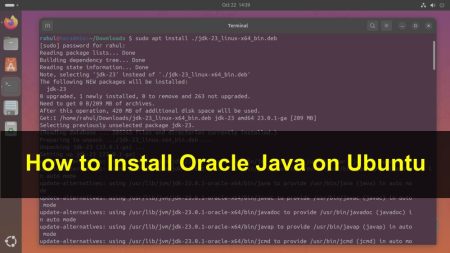Java, being a robust and versatile programming language, offers a plethora of arithmetic operations that one can utilize. Among these operations, division stands out due to its practical significance. In this article, we’ll explore how to compute the quotient and remainder in Java, elucidating the underlying concepts for beginners.
1. Basics of Division
Before diving into Java specifics, let’s revisit the basics of division. When we divide one number (dividend) by another (divisor), we get:
- Quotient: The result obtained.
- Remainder: What’s left after the division.
Example: When we divide 10 by 3, we get:
Quotient: 3
Remainder: 1
2. Java Arithmetic Operators for Division
Java provides two primary arithmetic operators for division:
/: Returns the quotient of the division.%: Returns the remainder of the division.
For example:
int dividend = 10;
int divisor = 3;
int quotient = dividend / divisor; // This will be 3
int remainder = dividend % divisor; // This will be 1
3. Beware of the Data Type
The result of the division operation in Java heavily depends on the data types of the dividend and divisor:
- If both are integers, the quotient will also be an integer. For instance, 5/2 would yield 2, truncating any decimal.
- If one or both operands are floating-point numbers (float or double), then the result will be floating-point. For example, 5.0/2 would give 2.5.
4. Handling Division by Zero
In mathematics, division by zero is undefined. Similarly, in Java, if you attempt to divide by zero, it will throw an exception:
- For integer division: `ArithmeticException`.
- For floating-point division: Will result in `Infinity` or `NaN` (Not a Number).
int result = 10/0; // Throws ArithmeticException
double result2 = 10.0/0; // Returns Infinity
5. Practical Example: Building a Division Utility in Java
Here’s a simple Java program that will take input of two numbers, then computes and displays the quotient and remainder:
import java.util.Scanner;
public class DivisionUtility {
public static void main(String[] args) {
Scanner scanner = new Scanner(System.in);
System.out.print("Enter the dividend: ");
int dividend = scanner.nextInt();
System.out.print("Enter the divisor: ");
int divisor = scanner.nextInt();
if (divisor == 0) {
System.out.println("Error: Division by zero is not allowed.");
return;
}
int quotient = dividend / divisor;
int remainder = dividend % divisor;
System.out.println("Quotient: " + quotient);
System.out.println("Remainder: " + remainder);
}
}
Output:
Enter the dividend: 10
Enter the divisor: 3
Quotient: 3
Remainder: 1
Conclusion
Computing the quotient and remainder in Java is straightforward, thanks to its rich set of arithmetic operators. However, one must be cautious about the data types used and handle potential exceptions like division by zero. With this knowledge in hand, you’re now equipped to effectively perform and manage division operations in your Java programs.

